How to Utilize Content Amplification and PPC for Inbound Marketing and Brand Promotion
Digital marketing has become the lifeline for any online business to survive. You will find millions of blogs on the web every day, which leads to cut-throat competition among them. In such cases, if a business wants to survive in the hugely unpredictable digital market, it has to thrive and depend on successful digital marketing. There are several strategies to market content online and there is no end to how creative you can get while promoting your content. PPC inbound marketing, content amplification are just three of the many, many methods of digital marketing. But have you wondered how your content is going to fare when you mix all these three forms of marketing to promote your content? In this article, that is what we are going to discuss it.
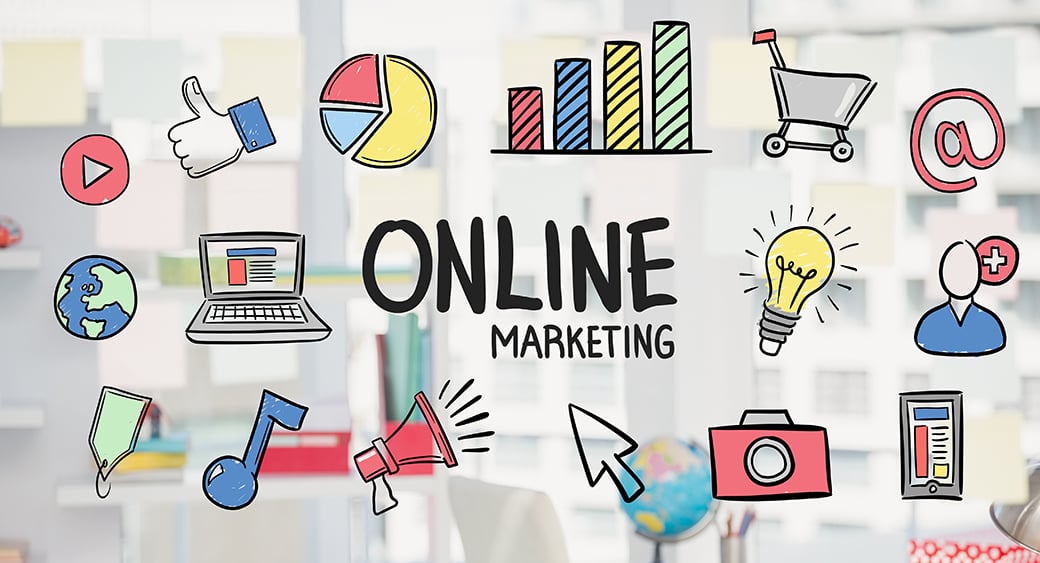
What is PPC Marketing?
When you start a blog, your obvious ultimate aim is to make money out of it. While there are numerous ways to monetize your blog, there is one thing that every online entrepreneur will readily agree to. That is, the best and most effective way to make money out of your blog is via PPC or pay per clicks and content amplification. If you have the slightest idea about digital marketing, you know what PPC is. It is when you make money out of per click on your ads by visitors who visit your website. Even though different advertising platforms have different predetermined rates which will make your revenue vary, one thing you can be sure about is that you are going to earn money out of it. But the question remains, how to design and launch a PPC ads campaign that will bring in the revenue for you? It might seem to be an easy task, but if you have not got your basics right, it will be difficult for you.
What is Content Amplification?
As the name suggests, content amplification or content marketing amplification means expanding your content. But that is a very basic definition. In a practical sense of the term, the process when you utilize various platforms to share your content so that you can reach out to more and more people, it is when you are amplifying the content. As a result of this, over time you increase the reach of your content.
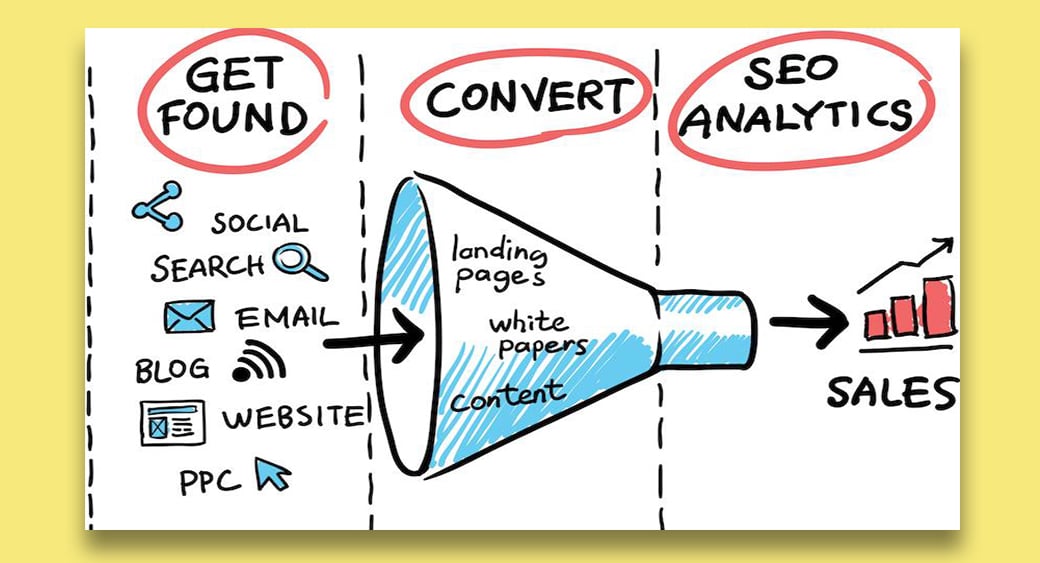
Content amplification strategy, as you can say by now, is parts of the content marketing strategy to ultimately maximize the conversion rate on your website. content amplification strategy includes steps like the optimization of the content using various SEO techniques, content amplification, and content distribution.
There are two main reasons why you should adopt the content amplification strategy as part of your content marketing strategy. They are:
- To test whether the headline of your article is catchy enough to get more clicks. Headlines are the most important part of an article. In fact, headlines determine the actual fate of the article. That is because; readers will click on an article only if the headline is interesting enough to catch their attention.
- Secondly, when you amplify the content right after posting it on the first platform, it enhances the initial boost an article needs to perform well. You can always update your content later, but content amplification is a foolproof way that is the initial indicator of how the article is going to perform in the long run.
What is Inbound Marketing?
Inbound marketing is just another small process in the huge world of digital marketing. It is the process of using and clubbing the various forms of pull marketing, like, blogs, events, SEO, content marketing etc. to enhance brand awareness, brand recognition and also to attract new businesses. It aims to catch the attention of customers and target audience so that they can easily find and recognize the brand. While outbound marketing solely focuses on attracting customers, inbound marketing believes in creating happy customers for a better business with higher sales revenue.
Inbound marketing strategies have three very important steps, that is to first attract customers, then make them engage with your brand and finally give them back a substance of delight. This means that at every stage of a customer’s interaction with your brand, you are creating value and building credibility for your brand by making your customers trust your brand. Inbound marketing strategies, when executed successfully will mean that your existing customers will come back to you when they need to make another purchase. They will also promote your brand to their friends, families, colleagues etc. and that will give you new customers.
How will you use Content Amplification and PPC for Inbound Marketing?
You might think that PPC and inbound marketing are two completely different forms of marketing that cannot be clubbed together. In fact, PPC ads campaigns are often interruptive and people tend to get annoyed by that. But when you play the cards right, PPC and inbound marketing can be clubbed together and greatly complement each other.
But how would you do that? Even before you start, you need to understand how the PPC form of marketing can positively affect the inbound marketing. PPC would mean that the visibility of your business is boosted. So, when potential customer’s searches for keywords that are related to your business, your company will come at the top of the search engine results page (SERP). PPC inbound or outbound marketing would mean you can reach out to a higher number of audience bases which is highly relevant for your business. That is because they found your brand only when they were looking for products or services related to your brand on the search engine. So, PPC here takes care of the established customer base. The data, demographics, and insights that you collect from the PPC campaign can help you enhance the content strategy that you follow and will help you create better and more relevant content in future that will align with the interests of what your target audience wants to read.
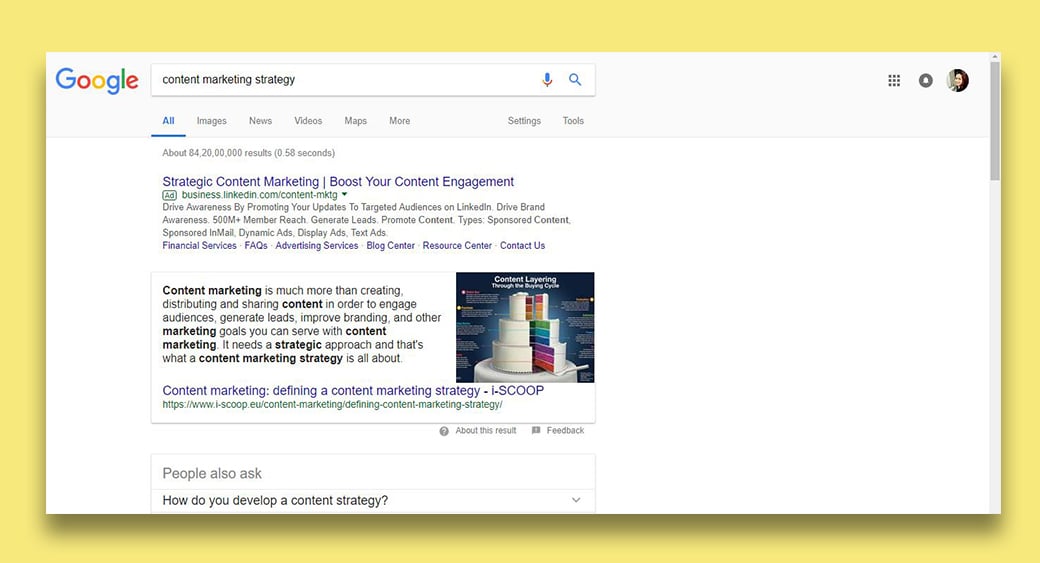
For example, you can see in the screenshot that for the given set of keywords, the top result is a PPC ad from LinkedIn. This will lead to more visibility for LinkedIn. The best part about PPC advertisements is that it gives you instant results, that is, instant traffic and instant better exposure, unlike more other organic forms of marketing like SEO campaigns.
Let us now come to the major point of how to use content amplification and PPC for inbound or outbound marketing. Here is how you can do that.
1. Have a Well-Defined Target Audience
Even before you can launch a PPC campaign to blend with your PPC inbound marketing strategies, you need to first ask yourself that who all will be genuinely interested in the product or service you are offering. In other words, you have to determine that which section of the audience should you target so that they find the campaign useful and eventually lead to a maximum conversion on your website. You obviously know the importance of a campaign reaching the right kind of audience and the huge impact it can make on the growth of your brand. So, consider the audience demographics like location, age, sex, their jobs, what they do in their free time, their search trends etc. before designing the campaign. You can then create more personalized content based on their interests.
2. Target the Right Keywords to Build the Campaign
Keywords are the lifelines of any PPC campaign and that is why it is very important that you choose the right keywords that will bring you maximum traffic and ultimately, maximum conversions. The ideal kind of keywords that would yield best results for PPC inbound or outbound marketing strategies are the long tail keywords because that will make sure that you deliver very specific ads that will cater to the search queries of the user. The Google Keyword Planner is a great tool that will help you with ideas for all the long tail keywords that you can target. It will show you a long list of all probable keywords, the number of searches conducted by users using those keywords and the level of competition for them.

As you can see in the screenshot, the Google Keyword Planner shows the relevant keywords, average monthly searches, and the level of competition, suggested bidding rate for the particular keywords and has also put them all in a bar graph.
3. Use the Data Collected from the PPC Campaign to Create Content
Using Google Keywords Planner when you get a set of keywords, you can then start experimenting with the keywords and start including them in different phrases in different articles to test which permutation combination works the best. When you have the figures, you will know what exactly your target audience wants to read. You can then create relevant and specific content that your target audience will find useful, instead of just promoting your business in those articles.
Let’s give you an example. Suppose you own a company that manufactures promotional products like t-shirts, hoodies, caps, coffee mugs etc. for corporate companies. When you get a keyword set like ‘promotional hoodies’, you can use that to create a completely new article like given in the picture. Your target audience here is someone who is looking for t-shirt manufacturers. In this article, instead of just going and on about your business, you can give them value by telling them how promotional products are beneficial for any business. Apart from this, you can create several other different forms of content like tutorials, comparison articles, how-to based articles etc.

4. Promote Content of Value Using the Power of Paid Ads
You can then use the power of PPC to promote this content of value that you created, instead of just promoting your business through generic paid ads. Remember, we are talking about clubbing PPC with inbound marketing, so you have to give value to your customers as well. When you promote these valuable articles through PPC, you are helping out people who are researching before making a purchase. Your content will help them make an informed decision. While a lot of them might not convert instantly, but you know you have already got important leads that might convert in future?
You have to make sure that your PPC campaign does not focus on only one article. You have to keep creating different articles and also direct ads that will promote your brand. Even when you are doing content marketing amplification, you still cannot undermine the importance of regularly paid ads that promote your business. Your articles should also contain a clear call-to-action so that your readers know what they are supposed to do next after they are done reading the article.
5. Optimize the Landing Pages of Your PPC Ads
You should also continue to keep optimizing the landing page for your PPC ads and create new ones too. You have to make sure that the landing page you are designing is highly focused on what you had advertised on the SERP. You have to remove all sorts of distractions that might annoy the readers; else they will not convert if they do not find relevant information.
For example, suppose the ad on the SERP is of an eBook that is about how to launch a successful PPC campaign, then you have to ensure that the page on which your readers will be redirected is about guidelines to launch a successful campaign. The headline of the page should talk about the product, that is, the eBook here. The content should also focus on the benefits that readers will get on purchasing or downloading the eBook and what their takeaway will be from that eBook. After that, there should be a clearly specified call-to-action that will tell your readers to either download or purchase the book from the site. Make sure not to include any extra images that would distract or annoy your audience.
How to Blend PPC Inbound Marketing and Content Amplification?
Ideally, there are two instances when you would want to use the PPC advertising for inbound marketing. One is before you create the content and the other is after you have written the content already and want to amplify it. How to use PPC before content creation is what we were talking about so far. Finding the right kind of audience, choosing the right long tail and short tail keywords, experimenting with them to see which ones yield the highest traffic etc. are all you have to take care of before you start creating the content.
Once the content is ready, your focus will be on promoting amplifying the content using various strategies so that it performs its best and can generate leads for you. Here comes the most important part of this article, where you are going to blend the three techniques to market your content better. So, how are you going to do that?
Here, your focus should be on distributing the content across various platforms and not informing your readers about the publishing of the content. First, you have to check all your available resources. In most cases, you will find that there is an upcoming event or festival or a particular time of the year where your content will perform the best.
So, you have to weave a content amplification strategy keeping that in mind, where you will have to spread the word and generate interest and need among your target audience. When you send an email to your subscribers, you are just communicating with those people who are in your email contacts, not your entire target audience. When you use PPC, you can reach more people who are researching about products or services that you offer. Using PPC in this scenario will show you the true potential of your content and how it can actually perform.
Preparing the Campaign
Well, how would you do that? First of all, you will need to create an account on Google Adwords, which is going to be the official account for all your PPC campaigns. You have to then follow all the steps, set up your account and personalize its structure and organization according to your needs. Then you have to create new targets and keep tracking them to measure the success rate of the content, using the KPI.
Next, you have to make sure that the content amplification PPC campaign should be evenly spread on more than just one content. You should focus on amplifying all your relevant content using PPC. Only then you will be able to add value to your audience’s search terms. This is where you will fulfill the needs of inbound marketing. If you are looking for great strategies to amplify your content, you have to create PPC campaigns that will focus on keywords, relevant content and generic ads about your products and services. Creating this mix is always a good idea as it increases the chances to reach out to various sections of people among your target audience.
How to Create the Best PPC Ads
After this, it is all about researching for the right keywords. The PPC ads you are going to design should contain all relevant keywords that your target audience is using to search for related products and services. Few tips to keep in mind to create the best ads.
- Use strong language that will have a sense of command and have a sense of urgency in it, compelling people to click on them.
- The message has to be very clear. Right in the ad, you have to tell people what value you are offering and how they are going to benefit by clicking on the ad.
- Use well-defined and relevant images. Remember that your visitors should not get distracted or annoyed by irrelevant images.
- Design a good landing page that should be aligned with the ad.
The landing page should also have crisp and compact buttons for each social media platform, like Facebook, WhatsApp, Twitter, Pinterest etc. This will enable your visitors to instantly share the link of the content on their respective social media accounts with their friends if they liked the content.
So, here is where all the three forms of content marketing merge together to make the content perform the best. You are using PPC to create sponsored ads for your content. At the same time, you are providing something of value to the target audience. You are providing them with high value with the most relevant articles about their search words. So, they start trusting your brand and that is how your brand earns credibility and recognition among all your competitors.
Finally, since your target audience now trusts your brand and likes the content, they will also want to share this with their friends, family, and colleagues. That is when the content gets amplified organically as a branch of the advantage of running a PPC campaign. The more social media shares your content gets, the better it will perform. As a result, it will generate leads, increase the chances of conversion on your website and ultimately, boost sales revenue.
Wrapping up
With this, we come to the end of this article. For everyone who thought PPC, inbound marketing and content amplification techniques can never be related, they have been proven wrong. In fact, the health and longevity of any article on the web depend on how efficiently the marketer or the businessman club these three forms of content marketing together. When these three have been clubbed together, you will get interested investors who will want to invest in your website to buy ad slots on the web pages and, of course, you will earn the trust of your target audience. That will not only help you to retain your existing customers, it will also get you plenty of new customers. When your existing customers talk highly about your brand to their loved ones, the will also want to make purchases from your brand.

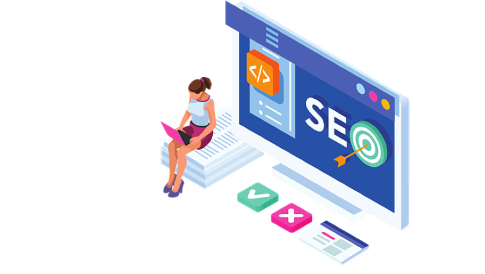
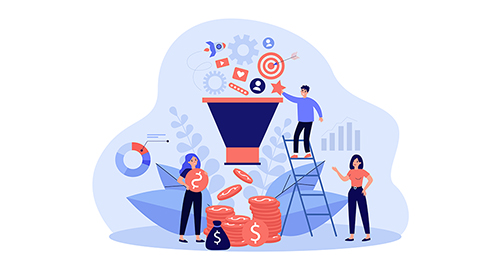

Leave a Reply